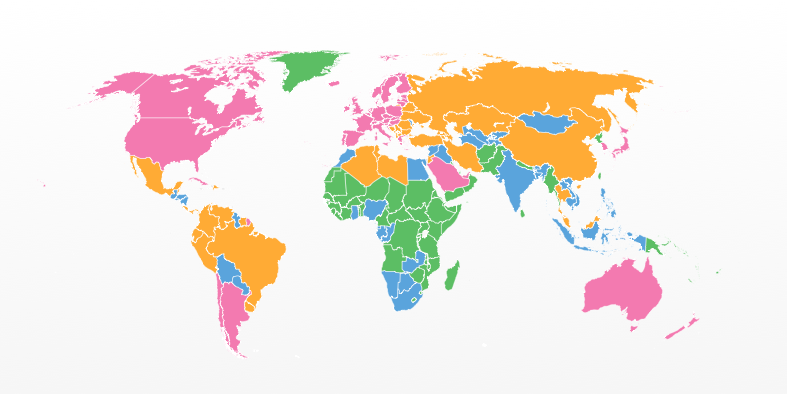Most mobile apps today use static pricing – every user sees and pays the same price for the content or subscriptions that the mobile app sells. In contrast, segmented pricing allows mobile app publishers to tailor prices of in-app content or subscriptions to specific user groups. This method of targeted pricing can increase app revenue and engage price-sensitive users with the paid experience.
50 Mobile App Monetization Stats: The Ultimate List of Links
Sweet Pricing curates the ultimate resource of mobile app monetization facts and figures. Compare your mobile app against these industry stats.
Mobile app publishers use analytics tools like Sweet Pricing to gain an understanding of their app’s monetization performance. But these analytics tools are missing part of the story: how a mobile app compares to its competition.
These stats are important, but it has been difficult to find them in one place. They exist in multiple places out on the web. This blog post is our attempt to bring all of these stats together, into an ultimate app monetization resource.
Mobile User Acquisition: 4 Ideas to Get More Users for Your Mobile App
There are a number of mobile user acquisition strategies that can grow your app. A good acquisition strategy drives users from multiple sources at low cost. It is a combination of organic and marketing techniques that get users to know and install your mobile app. In this blog, we look at 4 ideas for acquiring new users.
Retention & Engagement: 4 Ways to Improve Your Mobile App
Retention and engagement are critical to the performance of a freemium mobile app. While user acquisition is important to grow your mobile app, your app must retain users and monetize them over a long period of time. In comparison to acquisition, retention and engagement are very hard qualities to attain. The failure to retain users is often the reason for a mobile app’s failure.
In this blog post, we explore 4 ways you can improve the retention and engagement metrics of your mobile app.
Dynamic Pricing Concerns: Why You Should Use Sweet Pricing
App publishers have some concerns about dynamic pricing in mobile apps. I respond to common concerns and say why you should consider Sweet Pricing. Sweet Pricing helps mobile app publishers maximize revenue with price testing, segmented pricing and dynamic pricing.
Over the past year, I have reached out to hundreds of publishers. In that time, I have heard a number of concerns about dynamic pricing that have made publishers uneasy about Sweet Pricing and our tools. A small number of these concerns arise time and time again.
Tutorial: Dynamic Pricing in a Swift iOS Mobile Game
In this blog post, I will set up dynamic pricing in a Swift-based mobile game called ‘Match The Atoms’. I will start with a mobile app that uses in-app purchases, but does not use dynamic pricing. When I finish, I will have created a Sweet Pricing account, installed the iOS client library and tested the installation.
The aim of this blog post is to demonstrate, to a technical audience, how quickly you can install Sweet Pricing into a mobile app. I performed the install in under an hour. While the difficulty varies from app to app, you can expect a Sweet Pricing install to take no more than one or two developer days.





